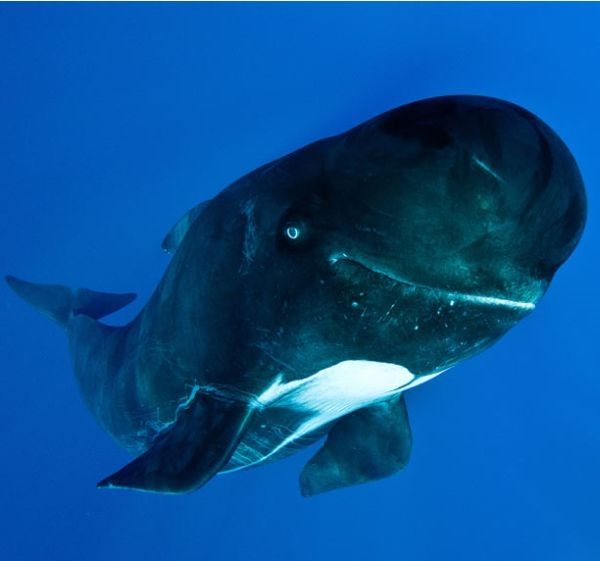|
|
Pilot Whale, Strait Of Gibraltar
|
Males are less gracile in form than the females. Differences between long and short-finned pilot whales are quite subtle, and where their distributions overlap it is generally not possible to tell the species apart at sea. On land specimens may be distinguished by the length of flipper, the number of teeth and the shape of the skull: the Short-finned has a more bulbous head particularly in older males; the Long-finned is squarer, and the forehead is more likely to overhang the mouth. G. macrorhynchus was described, from skeletal materials only, by John Edward Gray in 1846. He presumed from the skeleton that the whale had a large beak ("macrorhynchus" in Latin). Birth weight of calves is roughly 220 lb. (100 kg.). Adult males can reach up to 20 feet (6.1 m) and weigh up to 3 tons.
Adult females measure up to 16 feet (4.9 m) and weigh up to 1.5 tons. Life span is about 45 years in males and 60 years in females for both species. Both species live in groups of about 10 to 30 in number on average but some groups may be 100 or more. They are quite active and will frequently lobtail, spyhop and approach boats. Pilot Whales feed predominantly on squid. As compared to their other tooth-whale relatives they have many fewer teeth; numbering only 30 to 40 as compared to 120 in the bottlenosed dolphin. This is thought to be an adaptation to their squid-eating diet.
|
|









